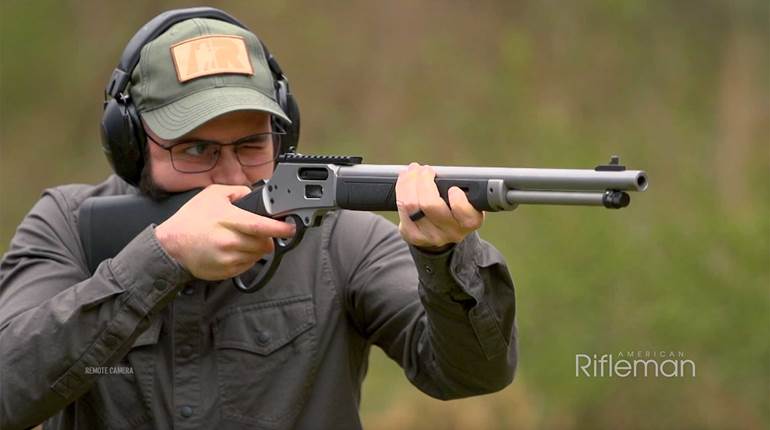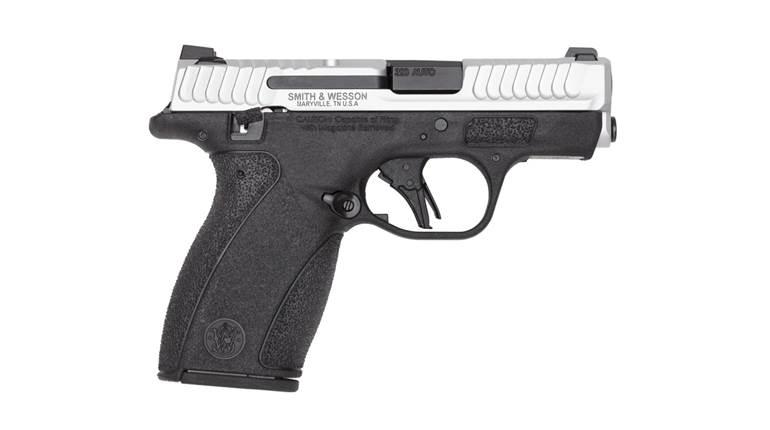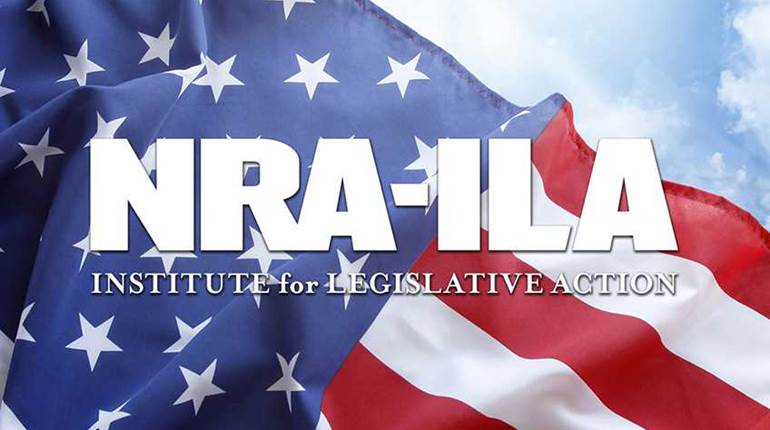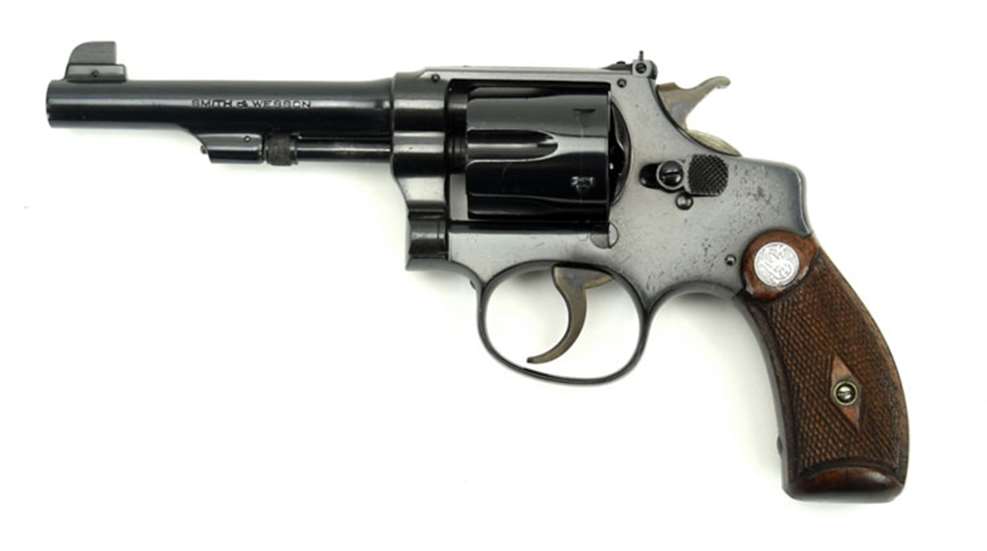
Top image: Smith & Wesson 22/32 Kit Gun courtesy collectorsfirearms.com
When somebody comes up with a great gun idea, one of the first things demanded after its initial success is either a scaled-down or scaled-up version. Smith & Wesson’s Hand Ejector series of double-action revolvers has become the icon of the company and was the benchmark of revolvers for more than a century. The first Hand Ejectors were brought to market in 1895 in two frame sizes: the .32-caliber I-frame and .38-caliber K-frame. It should be noted that there were some .32-caliber revolvers made on the K-frame as well. These revolvers found immediate favor among target shooters, as well as police officers and the general shooting public, and the company immediately began putting together a plan for producing revolvers from .22 caliber to .44 caliber in various frame sizes.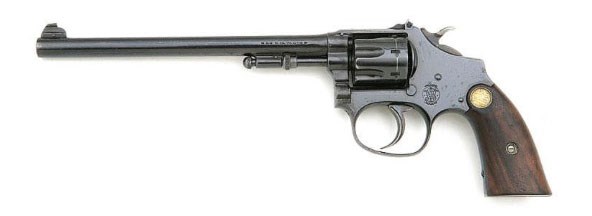
.22-cal. LadySmith revolver image courtesy invaluable.com
Smith & Wesson introduced the first Ladysmith built on its smallest M-frame in 1902. The Ladysmith was the only revolver made on this frame and featured a 7-shot cylinder chambered in .22 Long. Barrel lengths ranged from 2 to 6 inches. The Ladysmith was discontinued in 1921 with some 26,154 revolvers made in three variations. A major factor in consideration for halting production was the size of the revolver. It is said that the M-frame and its components were so small that the men assembling them had a fair amount of difficulty doing their job, thus increasing the cost of production substantially and lessening the profit on such pieces compared to their larger counterparts. These miniature Smith & Wessons are highly sought after by collectors today.
In 1910 a San Francisco-based gun dealer named Phil Bekeart began calling for Smith & Wesson to chamber its .32-caliber I-frame in .22 caliber. Bekeart felt that a heavy framed .22 would be a big seller among target shooters of the time. He was so committed to the idea that he pre-ordered 1,000 revolvers. This 22/32 Heavy-Frame Target model had a 6" barrel, a six-shot cylinder, adjustable sights, checkered walnut stocks that extended beyond the square butt, a la the single-shot Smith & Wesson target revolvers. Bekeart’s faith in the popularity of the 22/32 Heavy-Frame Target model was a bit ambitious. Just 292 of the original order of 1,000 revolvers were shipped. Though this revolver remained in the Smith & Wesson catalog into the 1930s, it did not set the world on fire. Target shooting, while still popular, had pretty much reached its peak, and then—much like today—other forms of recreation began to make inroads into it, vying for its time and tools.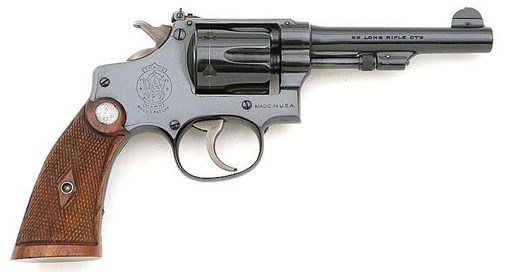
Smith & Wesson Transition 22/32 image courtesy invaluable.com
During the depths of The Depression—1936—Smith & Wesson introduced a 22/32 revolver with a 4" barrel. Christened the Kit Gun, it was marketed to hikers and fishermen who wanted a handy, lightweight revolver to deal with pests and snakes. The term Kit Gun meant that its intent was to be carried within one’s kit as they traveled around the backcountry and streams. World War II curtailed virtually all civilian guns, including the 22/32 Kit Gun, but it returned to the S&W lineup in 1950. The post-war guns featured a change to the then-new hammer block, as well as a new micrometer-click rear sight.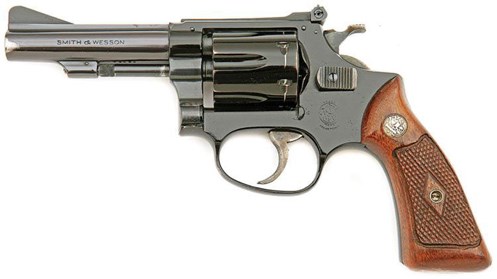
Smith & Wesson Flat Latch image courtesy invaluable.com
Three years later a new series was introduced, the 22/32 Kit Gun Model of 1953. The most notable change was an improvement to the I-frame by the replacement of a leaf-type mainspring with a coil spring. A 2"-barreled version was also first offered. In 1955 the fourth screw at the top of the sideplate was eliminated. Model numbers were assigned to all Smith & Wesson handguns in 1957, and the 22/32 Kit Gun became known as the Model 34. The I-frame was replaced by the J-frame in 1960; the primary difference being a larger cylinder window to make room for a longer cylinder that could accept .38 Special cartridges. Though this didn’t directly impact the Model 34, it followed with the J-frame to simplify the line. The M prefix to the serial number was added in October 1968 in order to distinguish these from others in the line. Fifteen examples of the Model 34 were started without the micrometer-click rear sight; instead a groove in the topstrap served. Of these, just four were shipped. As can be imagined, collector interest is quite high in these four revolvers.
In 1954 a prototype variation featuring an aluminum frame and weighing 14 1/2 oz. was built. Christened the Model 43, it was cataloged in 1955 but not in full distribution until 1958. A Model 51 chambered in .22 WMR was brought out in 1961 and discontinued in 1974. The Model 51 was produced in both round- and square-butt configuration with just 500 in the round-butt, making it quite rare and generation considerable collector interest.
A stainless-steel Kit Gun, dubbed the Model 63 was introduced in 1977 and made until 1998. It was available with either a 2" or 4" barrel, round or square butt.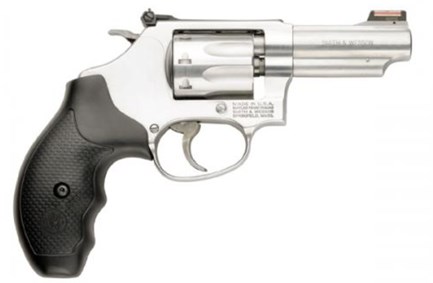
Smith & Wesson Model 63
The Model 34 was discontinued in 1991 though there were a few reissues. Today it exists in two more modern configurations, the Model 317 with an aluminum frame, 3" barrel and an eight-shot cylinder or the Model 63, with a stainless steel frame, 3" barrel and an eight-shot cylinder. The newer versions carry an MSRP just north of $750. Vintage Model 34s range from the mid-$500s to more than a grand, depending on condition and whether the original box and accessories are included. Add 75 percent to 150 percent for the 1953 version, and 200 percent to 300 percent for a pre-War Model 22/32 Kit Gun. Like Smith’s big .44s and .45s, there is considerable interest in these “micro” Smith & Wessons.












